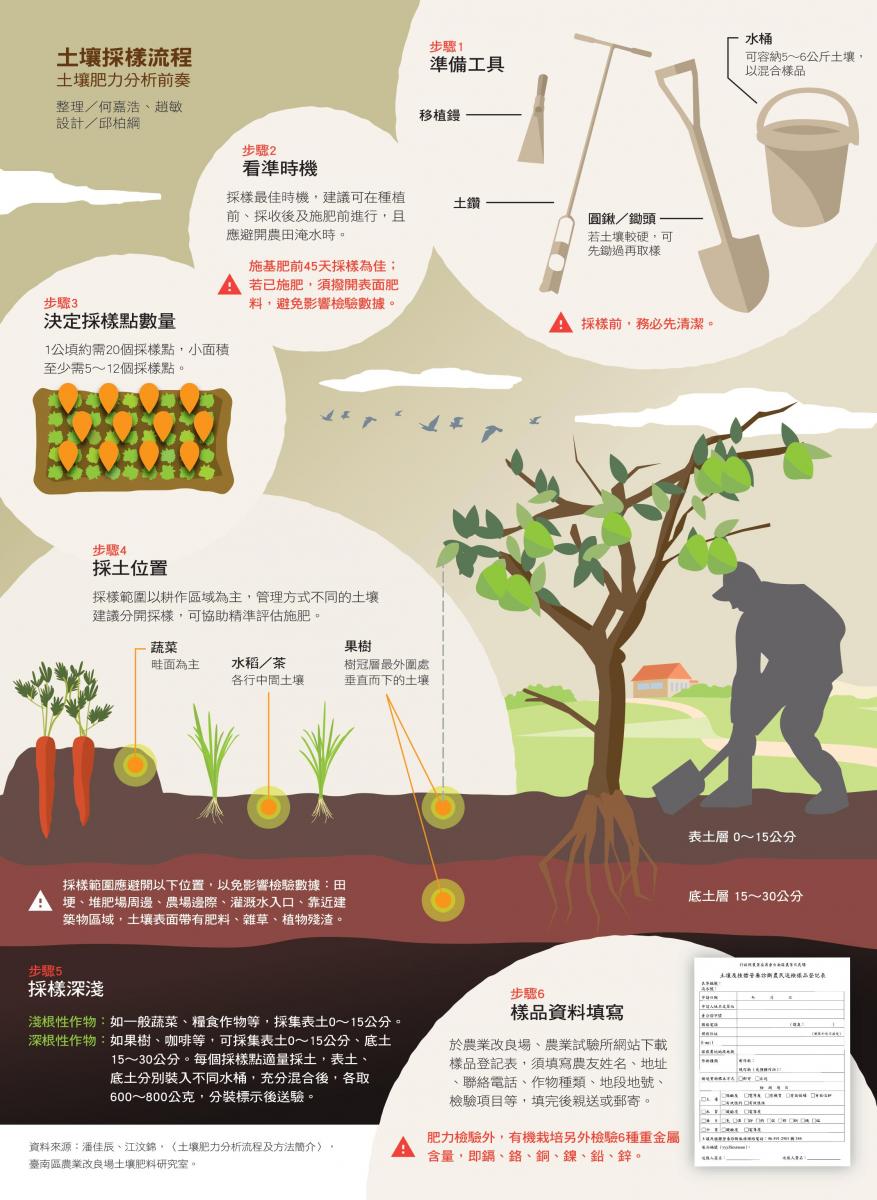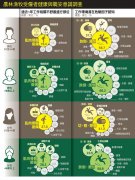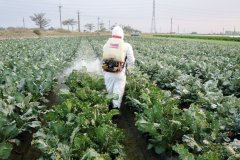Soil fertility testing: how to rationalize fertilization? Analysis report on soil Fertility Grade
The promotion of rational fertilization can avoid excessive application of fertilizer and is beneficial to the sustainable use of farmland. Rational fertilization means that farmers adjust the amount and methods of fertilizer application according to the growth characteristics of crop varieties, soil conditions and characteristics, the types and characteristics of fertilizers, and the response to crop growth after application into the soil.
Soil is the basis of crop growth. In the process of cultivation, too much fertilizer is applied, which will not only waste fertilizer resources and pollute the environment in the long run, such as nitrogen pollution of groundwater, high nitrate concentration of plants, etc., but also easily cause soil "disease" deterioration. It is difficult to provide elements for crop absorption, thus affecting yield and quality.
Soil fertility analysis report important basis for rational fertilization
Today, when paying more and more attention to science and data, when implementing rational fertilization, the soil Fertility Analysis report is an important reference for farmers to adjust the amount of fertilizer application and improve the efficiency of fertilizer application. At present, agricultural laboratories and improvement farms provide free soil fertility analysis services, write articles and hold workshops to teach farmers how to sample, and farmers can also entrust institutions with laboratory certification to inspect them at their own expense.
In order to obtain a valuable soil fertility analysis report, farmers must collect representative soil in the right way, so that the tested data will not be very different from the actual situation.
Huang Ruizhang warned that when farmers take samples, tools such as round shovels, transplant spades, or soil drills should be cleaned up, remember that the soil is not too wet, and try to send soil samples to the inspection unit 3-4 weeks before applying base fertilizer. In terms of sampling frequency, short-term crops such as leafy vegetables are sampled and sent for inspection at least once a year, and do not need to be sampled in every period; for long-term crops, if trees, they can be sampled and sent for inspection once in 1 ~ 2 years.

When the soil samples are filled, you can use a self-made sample bag or a clean plastic bag, and fill in the name, address, contact number, crop type, lot number, etc., in the sample bag, and send it to the agricultural laboratory or improvement site. Soil fertility analysis report can be received in about 2-3 weeks.
Agricultural administration units are intimate with notes, and farmers can understand it as soon as they get the report.
The soil fertility analysis report includes seven types of items: soil electrical conductivity (EC), soil pH value (pH), soil organic matter, soil available phosphorus, potassium, calcium and magnesium. Huang Ruizhang added that some agricultural land is divided into salt, and agricultural improvement farms will test sodium again to prevent sodium ions in the soil from affecting the soil aggregate structure, which is not conducive to the absorption of potassium and calcium ions by crops and root growth. When farmers get the soil fertility analysis report, in addition to listing the test values of seven types of items, the high will be marked in red, and blue indicates that the value is low, which can be reinforced. The report is also attached to the fertilization recommendations of agricultural improvement farm researchers for growing crops, so that farmers will no longer be confused when reading the report.
The encoded soil samples are sent to the soil air-drying chamber to avoid being affected by moisture during analysis.
Taking a small fruit tomato soil fertility analysis report at hand as an example, Huang Ruizhang suggested that farmers reduce the application of phosphorus and potassium fertilizer to avoid antagonistic effects, affecting the absorption of iron, zinc, copper, calcium, magnesium, and boron. Excessive magnesium fertilizer should also be avoided, so as not to hinder the absorption of calcium and potassium.
There is antagonism between different nutrients, and if some elements are difficult to absorb, they can also be supplemented by foliar fertilizer. Huang Ruizhang said: in general, short-term crops can refer to the soil fertility analysis report to improve the efficiency of fertilizer application; if farmers want to understand the absorption status and nutritional disorders of long-term crops, they can further do plant (leaf) nutrition diagnostic analysis. the sampling location and timing of different crops can refer to agricultural laboratory, improvement site website information, or call to inquire.
As for the reported lack of soil organic matter in small fruit tomato planting, it will reduce soil aggregate structure and nutrient availability. Huang Ruizhang said that if it is sandy soil, there is no problem with good drainage. It is recommended to apply low-fertilizer organic compost with high crude fiber content in plants, such as bark compost, bagasse compost, cow manure compost, rice straw or rice husk compost, which is about 600 to 800 kilograms per cent. However, sandy soil is not easy to preserve fertilizer, so it is necessary to apply a small amount of fertilizer several times, and the recommended amount of fertilizer should be increased by 10%.
Because the characteristics of each farmland are different, researchers in agricultural laboratories and improvement fields must, like detectives, consider the characteristics of the local soil, whether farmers are cultivated in the open air or in facilities, and peel off their cocoons one by one according to the types of crops and their commonly used fertilizers. After evaluating various values, make the most suitable recommendation for fertilization. Huang Ruizhang also cited the soil fertility analysis report of another small fruit tomato farmer as an example. The report showed that the pH value was less than 5.5, the electrical conductivity was 2.3 dS/m, the phosphorus was more than 500mg / kg, and the potassium was more than 1500 mg / kg. Not only the soil was slightly acidic, but the electrical conductivity, phosphorus and potassium were also much higher than the normal value.
"it may be that farmers overapply phosphorus and potassium fertilizer in order to make the fruit sweet, forming" pseudo-acidity ". The real acidity is that calcium and magnesium will be on the low side. Huang Ruizhang said that this situation is very common in protected cultivation. Because of the lack of Rain Water leaching, fertilizer is easy to accumulate too much, so it cannot be improved with bitter soil lime to avoid higher electrical conductivity. on the contrary, farmers should be advised to wash salt and acid ions away, and the pH value will naturally rise.
The inspection process is tedious, and a simple detector can be used when it is urgent.
In order to give farmers a basis before fertilizing, agricultural laboratories and improvement farms are almost as soon as possible in about 2 weeks, sending soil fertility analysis reports to farmers. Huang Ruizhang says that usually during autumn or spring cropping, a large number of soil samples are submitted for testing, because the Nankaichang area covers agricultural counties and cities such as Yunlin, Chiayi, and Tainan. For example, from September to October this year, an average of more than 1,000 samples were received each month, and the time for farmers to wait for the report may be extended to three weeks.
Farmers can obtain data immediately and fine-tune the direction of fertilization by using a simple detector to detect pH and electrical conductivity. (photo courtesy of Huang Ruizhang)
Some farmers report that the waiting time for the report is too long, but in fact, the process after sampling and inspection is quite complicated. When the agricultural laboratory and improvement farm receive soil samples, they must first register and put a number plate for each sample to facilitate classification and quick retrieval in the future. After coding, the soil is laid on the sample plate to remove weeds and stones, and then put into a large constant temperature ventilation box. After air-drying for 7 days and 10 days, it is taken out and sifted, beaten into fine powder and packed into the sample carton. Then, the soil sample should add extractant to exchange the anion and cation in the soil and dissolve it in the extractant.
The above sample pre-operation process will be completed before entering the computer analysis stage. Snacks can often be seen next to laboratory testing equipment, symbolizing that inspectors hope that there will be no mistakes in the inspection process and that the machine will operate smoothly.
The data of seven types of fertility analysis projects are obtained through instrumental analysis, and the professionals check whether the data are normal, and then they are compiled into soil fertility analysis reports, which are recommended by experts in charge of different crops and sent to farmers. For example, there are different experts responsible for the cultivation of rice, small tomatoes, cantaloupes, miscellaneous grains, flowers and organic crops, who write fertilization recommendations according to their respective professional assignments and attach a contact telephone number. If farmers still have questions after reading the report, they can call or join the exclusive social software group of the agricultural improvement farm. For example, Nangzaofang has a LINE@ life circle, which can instantly take photos and upload or write messages to ask about crop nutrition and pest management.
Of course, after farmers get the soil fertility analysis report, it does not mean that it will be foolproof from now on. Huang Ruizhang said that the report cannot predict the climate and crop growth after 2 to 3 months. Farmers should continue to accumulate experience, fine-tune fertilization in line with crop growth and climate change, and usually attend agricultural workshops to increase relevant knowledge.
If farmers still feel that the inspection process is time-consuming or urgently need reference values, Huang Ruizhang suggests that farmers can go to the chemical raw materials company to buy a simple detector for testing pH value and electrical conductivity. the price of one piece ranges from 1, 000 yuan to 3, 000 yuan, and the data can be obtained immediately after testing. As a reference for fine-tuning fertilization, "if you master pH value and electrical conductivity, you can basically understand the state of soil fertility." Now many farmers who invest in protected cultivation and emphasize precision agriculture have bought it. "
The soil fertility analysis report can be said to be the painstaking work of the laboratory staff of agricultural laboratories and improvement farms. A reliable report relies on correct soil sampling methods, sample pre-treatment, operation and maintenance of analytical instruments, digital interpretation, and so on. Through soil health inspection, it can help farmers to detect and adjust soil problems as soon as possible, and increasingly move towards the goal of rational fertilization.
However, how should rational fertilization be operated? Huang Ruizhang, associate researcher of crop environment course in Tainan District Agricultural improvement Farm of the Agricultural Commission of the Executive Yuan, who is known as a "soil nutritionist", explained that rational fertilization involves three steps: first, sampling soil for fertility analysis; thirdly, fine-tuning fertilization in line with crop growth and climate change In the end, because fertilizers are not 100% absorbed by crops after application, efforts should be made to improve fertilizer efficiency.
- Prev

What does agricultural catastrophe insurance cover? The necessity of constructing Agricultural Occupational disaster guarantee
Farmers themselves lack awareness of occupational safety, lack of occupational disaster insurance claims, fear that the crops will not be harvested in time, and continue to engage in farming with illness and pain. Compared with other industries, is the risk of agriculture high? Is there a legal source to ensure the occupational safety of farmers?
- Next

Tracing back to the Source of IPM crop production Management Technology to solve the causes of Plant Diseases and insect pests
IPM is not to set the absolute method, but to find the optimal method, so let's take a look at it. In the growth pattern of cruciferous crops, serious diseases and insect pests often occur near the harvest time. Take broccoli as an example, the sphere is covered with outer leaves, and the insect is easy to hide and lead to prevention.
Related
- A one-day flower show brings 130 million yuan in orders! Nanhai, this Phalaenopsis exhibition is amazing
- What do the flower language and meaning of Lutheran tree mean? Precautions for planting Lutheran tree
- Encounter Chaoshan Kongfu tea, not without this cup of Phoenix single clump
- The durian market in Vietnam and Thailand is flooded. The price of imported durian has plummeted by 30-40% in a month.
- Shanghai solved the problem of local vegetable supply by planting 80,000 mu of green leafy vegetables.
- Wageningen University has become the best agricultural university in the world for the seventh time in a row.
- The strongest export season of South African grapes is full of challenges, with exports to Russia falling sharply by 21%.
- Sri Lanka is on the verge of bankruptcy, "Tea for debt" Organic Agriculture Revolution aggravates the Food crisis?
- Turning waste into earthworm manure and worm manure into organic fertilizer-A new choice for auxiliary farming
- Organic rice growers shoulder the responsibility of nurturing agricultural talents! Yinchuan Sustainable Farm with Organic Life Camp

